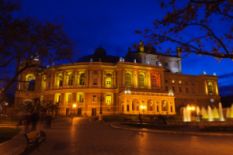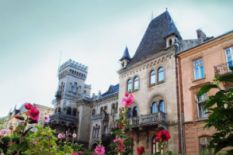Many people are curious about what life is really like in Ukraine, especially as a foreigner. The Ukraine's Soviet past has given many expats the impression that it is grim-faced and gloomy, but those who stick around for a while will discover that the pros outweigh the cons in this Eastern European country. Individuals who enjoy a good challenge will find life in Ukraine to be a new and wholly captivating adventure.
Read: What Is It Like To Live in Ukraine
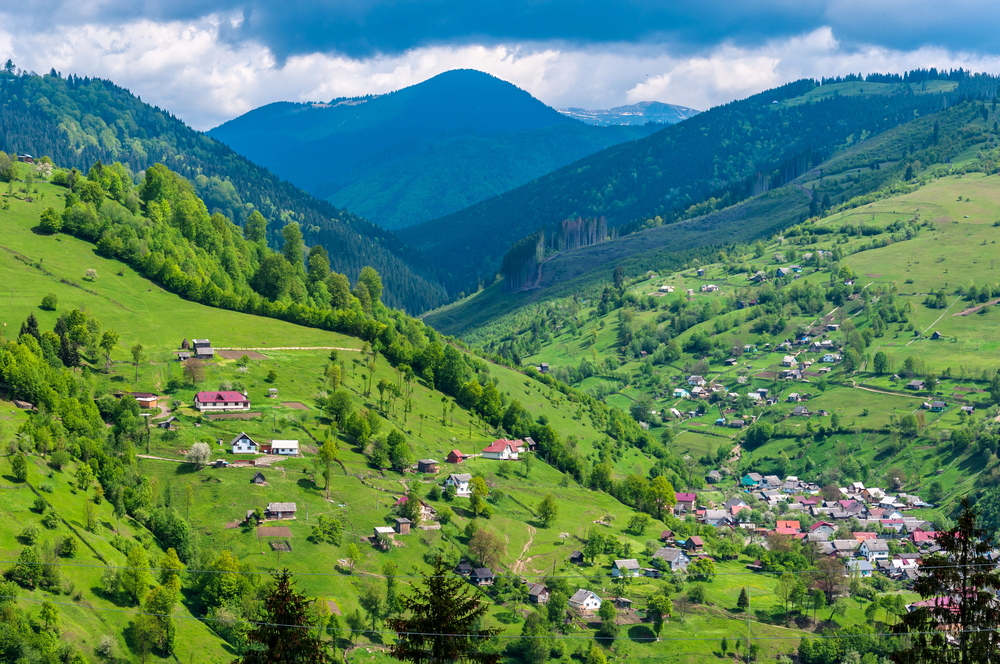
Ukraine is one of the largest countries in Europe with an area of 603628 km2 and a population of about 42.5 million people. It is a multiethnic country. The majority of the population are Ukrainians (73%), Russians make up to 22% of the population. There are many Jews in Kyiv and in Odesa. In the western regions Poles, Belarusians, Slovaks, Moldovans, Gypsies, Hungarians can be met, and in the Crimea – Crimean Tatars, Greeks, Bulgarians and Armenians. From religious point of view the population differs as well. The majority of people are the Orthodox believers; on the west of the country Greek Catholics dominate. Crimean Tatars are the followers of Islam and the Jews – of Judaism. In spite of these differences, each citizen of any nationality and religion feels free and safe in Ukraine. Ukrainians are known as friendly, loyal, with good attitude to other nations and with high international tolerance.
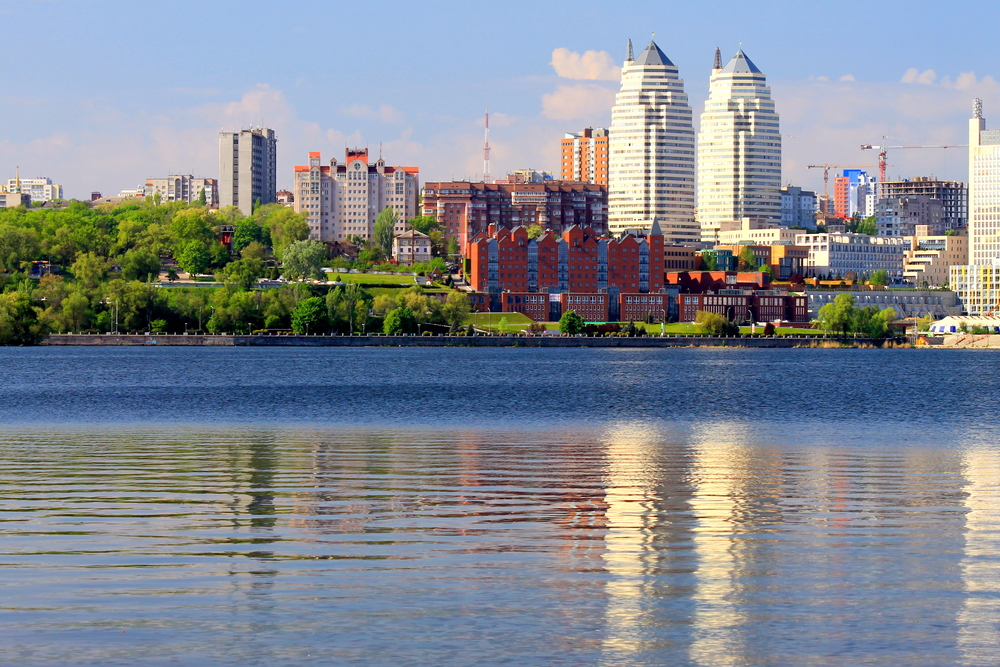
Photo above: Dnipro city
There are 5 large cities in Ukraine (1 million people and more): Kyiv (the capital of Ukraine), Dnipro (also known as Dnipropetrovsk), Kharkiv, Lviv, Odesa. All these cities are different, with their own unique atmosphere, distinctive features, but all of them are known as modern and comfortable cities loved not only by local but by foreign people as well. Kyiv is the biggest city in Ukraine, capital of the country and economic, cultural, and educational center, has a population of 2.6 million people. Kharkiv is known for its engineering expertise, machinery plants, and educational institutions. Dnipro is a center of metallurgical and aerospace industries. Odesa on the Black Sea coast, is the country's largest seaport. Lviv is often referred to as a cultural capital of the country.
The official language is Ukrainian. But many Ukrainians (especially in the East and South) speak Russian as well. Quite often young people also speak English.
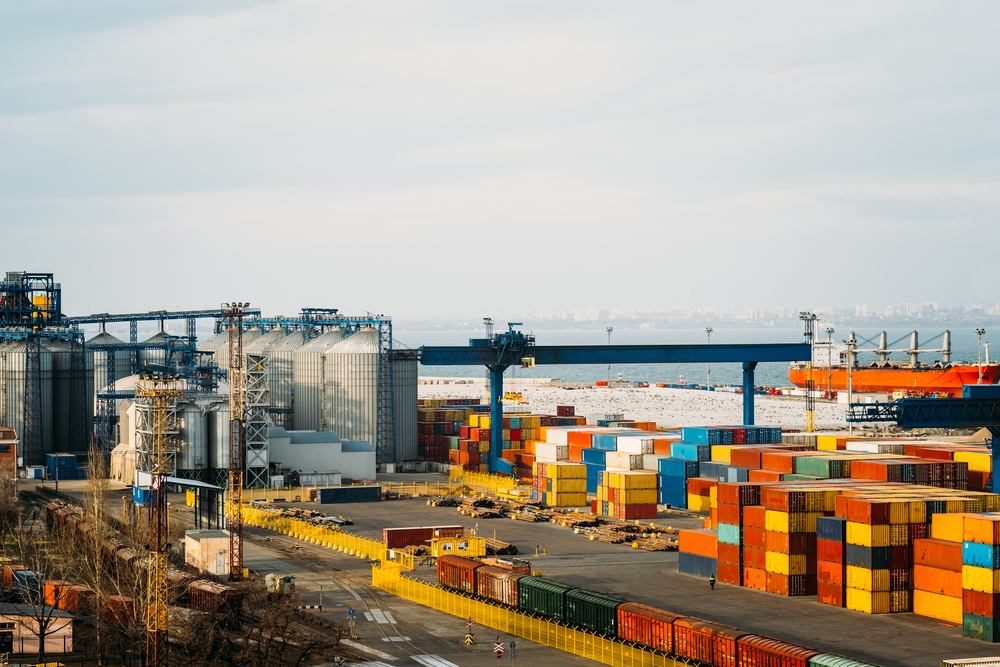
Photo above: Port of Odesa
On the territory of Ukraine all four seasons are clearly run: winter, spring, summer and autumn. Summer is hot, winter is comparatively cold. Winter in Ukraine lasts around 4 months with +5 to -10° C average temperature. Summer lasts 3-4 months with average temperature of +22 to +35° C. The transition from winter to summer (spring) and from summer to winter (autumn) usually lasts 1.5-2.5 months.
The geography of Ukraine is bewilderingly diverse, and this means there is a lot to see and do. Due to its geographical location and the mild climate there are spacious steppes and thick forests, warm seas and majestic mountains, rushing rivers and quiet lakes in Ukraine. The massive Carpathian Mountains cross Western Ukraine before descending south into Romania. This area is a veritable paradise for nature lovers. Depending on the season, it's filled with an ever-changing combination of skiers, snowboarders, hikers, hunters, mushroom pickers and fishing enthusiasts.
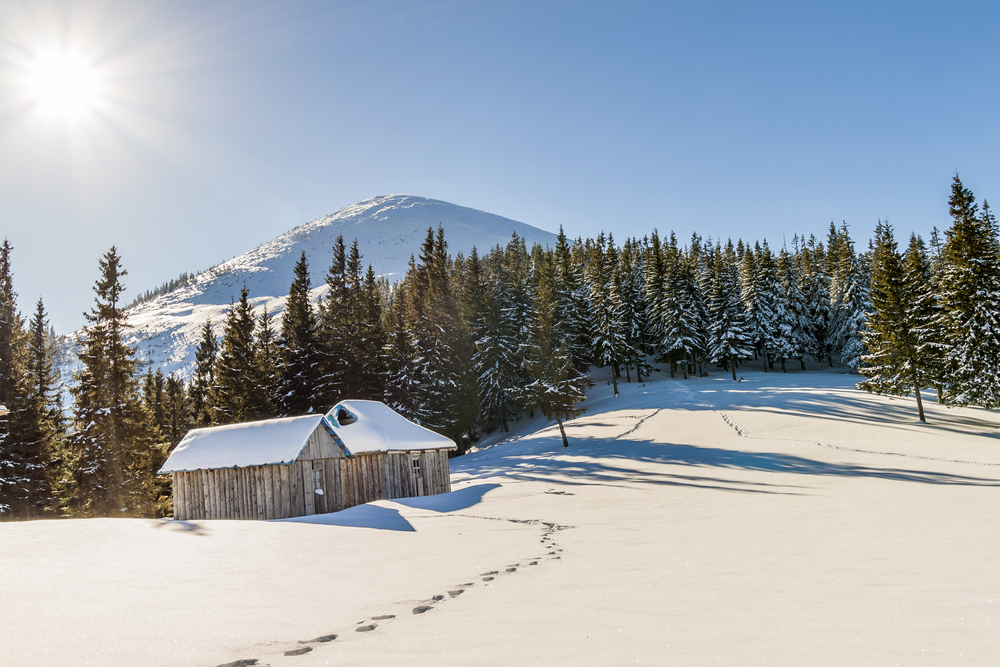
Photo above: Carpathian mountains in winter
Currently, Ukraine’s future looks promising, as it establishes closer ties with the European Union, resists Russian influence, and reimagines itself as the cultural center of Eastern Europe. Recently the country has also become a global mecca for IT outsourcing and it's economic growth is trending upward. However, political conflicts of the past still linger in the present.
On June 27, 2014, the EU-Ukraine Association Agreement was signed by European Union Heads of State and Government and Ukrainian President Petro Poroshenko in Brussels. The key parts focus on support of core reforms, economic recovery and growth, and governance and sector cooperation in areas such as energy, transport and environment protection, industrial cooperation, social development and protection, equal rights, consumer protection, education, youth, and cultural cooperation. Also it includes a Deep and Comprehensive Free Trade Area with the EU – this will go further than classic free trade areas, as it will both open up markets but also address competitiveness issues and the steps needed to meet the EU standards and trade on the EU markets.
Unfortunately, bribery and corruption are still common things for Ukraine. Those two factors are hurting the Ukrainian economy and government greatly. After 70 years of indoctrination of the Communist ideology, the populace here cannot grasp the concept of business without corruption. The Ukrainian family budget is difficult to capture in official statistics since it operates on data about primary income. Meanwhile the cost of living in Ukraine forces most adults to look for alternative income sources; a second job, cultivation of land, using privately owned cars as taxis, selling edible and consumer goods.
In most cases these secondary incomes are received in cash because cash still remains the major form of settlement in farm markets and stores. As a result, Ukraine has an area of unofficial “gray” economics along with the official economic statistics. These two economies produce a situation where it is impossible to know the sources and amount of income of many Ukrainian households. For now official statistics states that expenditures of the Ukraine population are considerably larger than the recognized income.
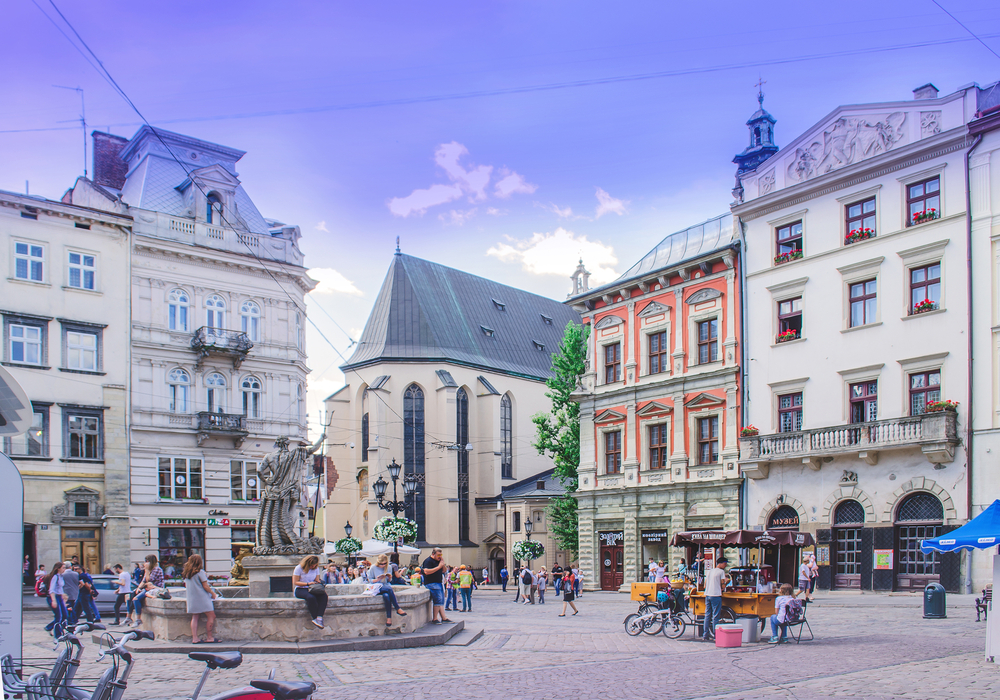
Photo above: Lviv city center
Ukraine is also known for Chernobyl tragedy that took place in 1986. Even after 30 years the country is still facing numerous ecological problems. Ukraine’s environmental problems include the nuclear contamination which resulted from the 1986 Chernobyl accident. One-tenth of Ukraine's land area was affected by the radiation. According to the UN reports, approximately one million people were exposed to unsafe levels of radiation through the consumption of food. Approximately 3.5 million ha (8.6 million ac) of agricultural land and 1.5 million ha (3.7 million ac) of forest were also contaminated. This situation is getting better each year as Ukraine is establishing closer ties with the European Union and other developed countries, which take part in helping to solve the environmental problems and to fight the gruesome Chernobyl consequences.
As for the rest of the country, the ecological situation is safe there. Ukrainian Carpathian Mountains and Southern coast of the country have many resorts which are popular among travelers all the year round.
Source: www.escapeartist.com, www.expatarrivals.com, www.expatexchange.com, wanderlustlanguages.com. Image source: shutterstock.com
